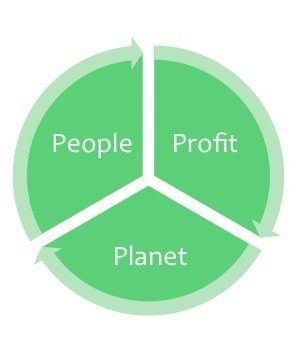In this post, I will discuss sustainability as a key business imperative and explain how companies can use CT’s to transform their business and reduce their overall environmental footprint.
Sustainability Is a Necessity That Is Good for Business
When you look at key environmental and social data, it becomes apparent that business as usual in no longer a viable option going forward. Over the past 40 years, the human population has more than doubled from 3 billion in 1960 to more than 7 billion in early 2012. This explosive growth, combined with a net gain for overall human wealth and well-being has put an unsustainable amount of pressure on our planet. Currently, we need more than 1.5 planets to sustain our current population and consumption patterns. This unprecedented growth and the incredible rate of change we are experiencing are quickly driving leading companies around the world to recognize sustainability as a key business imperative. Sustainability is not just a necessity; it is also proven to drive positive business results. Recent academic studies, as well as stock market data indicate sustainability leaders across different sectors are consistently outperforming their competition. However, integrating sustainability into a company’s overall strategy and operations is not an easy task. In most cases, “going green” requires a true business transformation, which affects every area of the business and requires an immense amount of collaboration and innovation between internal and external teams. Here is where the right mix of CT’s can drive tangible reductions in CO2 emissions while enabling unparalleled collaboration and innovation.
CT’s Fuel Innovation and Reduce Your Environmental Footprint
Collaboration technologies, such as Audio, Video, Web and Interactive Whiteboard Conferencing, can all contribute to CO2 emissions reductions and attractive operational efficiencies even if they are deployed in isolation. However, significantly higher returns can be achieved when these technologies are effectively integrated throughout the entire organization and used by different user groups. In sustainability terms, the key benefits of collaboration technologies can be allocated to each of the widely accepted sustainability criteria:
 From a People perspective, collaboration technologies allow employees to integrate work into their lifestyles, thus, allowing them to work effectively from anywhere they choose. This flexibility and perceived freedom have proven to increase retention rates, employee morale, loyalty and overall productivity by more than 20%. Also, collaboration technologies allow companies to create stronger relationships with their customers, to differentiate themselves from the competition and to enable them to focus on becoming their customer’s trusted advisor.
From a People perspective, collaboration technologies allow employees to integrate work into their lifestyles, thus, allowing them to work effectively from anywhere they choose. This flexibility and perceived freedom have proven to increase retention rates, employee morale, loyalty and overall productivity by more than 20%. Also, collaboration technologies allow companies to create stronger relationships with their customers, to differentiate themselves from the competition and to enable them to focus on becoming their customer’s trusted advisor.
On the Profit side, collaboration technologies allow companies to make almost every process more effective and efficient, resulting in dramatic productivity savings and capacity increases. Clear examples of attractive operational savings include reductions in travel, transportation and real estate costs. Furthermore, the effective deployment of collaboration technologies allows employees, suppliers and clients to collaborate and innovate faster than even before, therefore, creating new business opportunities. Companies that experience the highest returns do so by encouraging and integrating the use of collaboration technologies in their policies and processes.
Lastly, and increasingly more importantly, collaboration technologies can help reduce the environmental impact of most companies by reducing direct and indirect CO2 emissions, thus, lessening the strain on our Planet. Examples of large CO2 savings opportunities include emission reductions through less travel and commuting, reduced real estate requirements, and the capability of influencing employees’ mindset to further reduce emission by effectively measuring and communicating key environmental data through digital signage technologies.
As you can see, collaboration technologies contain all of the values of corporate sustainability, therefore, careful planning, attention and ongoing management of these vital tools will yield results that will positively impact People, Profit and our Planet.
About ET Group
Collaboration and sustainability are key business imperatives required to meet the demands of a rapidly changing world. ET Group designs and builds interactive collaboration ecosystems that help companies connect, innovate and execute faster while reducing their overall environmental footprint.
i– United Nations. (2011, May). World Population to reach 10 billion by 2100 if Fertility in all Countries Converges to Replacement Level– [Press Release].
ii Millennium Ecosystem Assessment. (2005). Ecosystems and Human Well-being: Synthesis.

